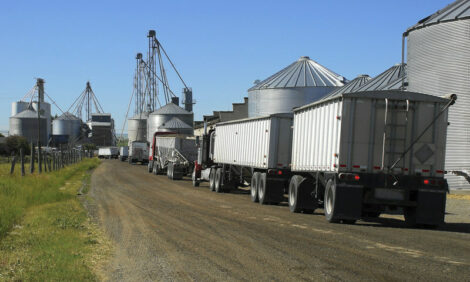



Weekly Outlook: 'How Much Longer?' Ask Producers
US - Equity has eroded and is continuing to erode quickly. Hog producers are asking how long the hog market will continue to drain their net worth, writes Chris Hurt, Extension Economist at Purdue University.How big has the equity drain been? That depends on the financial position of each producer, but a comparison to the 1998/99 financial disaster reveals the seriousness. Using estimates of losses in the 1998/99 disaster, a 10,000 head per year producer would have lost $213,000 in the seven quarters of loss beginning with the first quarter of 1998. In contrast in the first seven quarters of losses in the modern period, the 10,000 head per year operation would have estimated losses of $315,000. That spans the period from the fourth quarter of 2007 through the second quarter of 2009. Unfortunately, current forecasts are for losses to continue to mount for three additional quarters, through the first quarter of 2010, and rise to $396,000 of accumulated losses. This downturn is both longer and more severe than in 1998/99.
Producers have been slow to reduce the breeding herd this time. In the past two years, the US breeding herd has dropped by just three per cent. In contrast, from mid-1998 to mid-2000, the breeding herd was down ten per cent. There are at least four potential reasons for the slower rate of liquidation. The first may be that this time the industry’s losses were primarily related to much higher feed prices. Perhaps producers were not convinced that feed prices would stay high after their acceleration in late 2007.
Second may have been a miss-reading of the pork export surge in the spring and early summer of 2008, primarily driven by China and a cheap dollar. That surge was the primary stimulus for live hog prices moving from $39 in March 2008, to $58 in May, and to highs above $60 in August. Prices that high meant $5 per bushel corn was not as big of threat as earlier thought and unfortunately this delayed breeding herd liquidation. Looking back, that export surge was a onetime unique event, as exports have returned to much lower, but more normal levels.
Third, industry structure may be a culprit in such a slow downward herd adjustment. The industry has never had to make such a large downward adjustment with such a concentrated set of producers.
Finally, while the current string of losses has been large, the profits and net worth accumulated in the generally profitable period from 2000 until the current downturn began in the final quarter of 2007 were large. Taking the hypothetical 10,000 head producer’s accumulated returns from the start of 1998, the losses accumulated to $213,000 by the end of the third quarter of 1999. But then the industry returned to overall profitability for a long run. By the third quarter of 2007, the farm had overcome the losses of 1998/99 and accumulated $1.45 million of profits. For the farm continuously in production since 1998 the current losses that may accumulate to near $400,000 on this downturn may be coming from a high equity base.
This makes the point that all hog farms are probably not in financial trouble. Those most vulnerable to the current financial losses are those that have started production in the last three years, those that have had large expansions in the past few years, and those that diverted some of their hog earnings in 2000 to 2007 into assets such as stocks or residential housing that plunged in value as well.
How much longer? I expect modest losses this fall, with live hog prices averaging about $40 to $42 and all costs near $45. For the winter, hog prices are expected to be in the low to mid $40s with costs near $46. Profits may return in the spring of 2010 with prices rising to the higher $40 and costs remaining in the $46 to $47 range. For all of 2010, I expect a modest profit of $2 to $5 per head.








